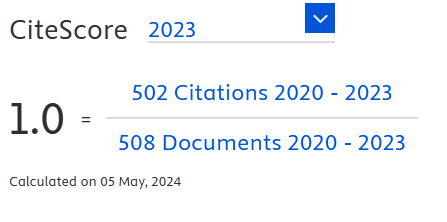Optimization of Formic Acid-Formalin-Based Decalcification Protocol for Rat Calvarial Bone Histology
DOI:
https://doi.org/10.18006/2024.12(2).218.225Keywords:
Decalcification, Rat, Calvarial bone, Formic acid, Histopathology, Bone regenerationAbstract
Decalcification is crucial in histological processing, particularly for studying mineralized tissues like bone. The choice of decalcification method can significantly impact the quality of histological sections and the preservation of tissue morphology. This study aims to establish a standardized protocol for decalcifying rat calvarial bone using a formic acid-formalin-based decalcification solution. The protocol was systematically optimized and evaluated based on various parameters, including decalcification time, formic acid concentration, and tissue integrity preservation. The decalcification process was evaluated through comprehensive assessments, including gross physical examination, chemical analysis, and radiographic imaging techniques. Our result demonstrated that the 10% formic acid concentration proved most effective for decalcifying rat calvarial bone samples within eight days, excelling in mineral content removal while preserving specimen structural integrity. In contrast, the 5% concentration failed to complete decalcification within ten days, and the 15% compromised sample quality within eight days. Histological analyses confirmed the efficacy of the 10% formic acid concentration in maintaining tissue integrity and achieving optimal staining quality. The standardized protocol presented in this study provides an effective and reliable approach for achieving consistent and high-quality histological sections of rat calvarial bone. An ideal decalcification agent should effectively remove calcium salts, preserve structural integrity and molecular components, facilitate rapid yet minimally damaging decalcification, and ensure ease of handling for laboratory personnel. Further exploration of its applicability to different bone types or species is recommended to broaden its research utility.
References
Abou Neel, E., Aljabo, A., Strange, A., Ibrahim, S., Coathup, M., et al. (2016). Demineralization-remineralization dynamics in teeth and bone. International Journal of Nanomedicine, 11, 4743–4763. https://doi.org/10.2147/IJN.S107624 DOI: https://doi.org/10.2147/IJN.S107624
Bancroft, J. D., & Gamble, M. (Eds.). (2008). Theory and practice of histological techniques. Elsevier Health Sciences.
Barrère, F., van Blitterswijk, C. A., & de Groot, K. (2006). Bone regeneration: molecular and cellular interactions with calcium phosphate ceramics. International Journal of Nanomedicine, 1(3), 317–332.
Bogoevski, K., Woloszyk, A., Blackwood, K., Woodruff, M. A., & Glatt, V. (2019). Tissue Morphology and Antigenicity in Mouse and Rat Tibia: Comparing 12 Different Decalcification Conditions. The Journal of Histochemistry and Cytochemistry, 67(8), 545–561. https://doi.org/10.1369/0022155419850099 DOI: https://doi.org/10.1369/0022155419850099
Callis, G., & Sterchi, D. (1998). Decalcification of Bone: Literature Review and Practical Study of Various Decalcifying Agents, Methods, and Their Effects on Bone Histology. The Journal of Histotechnology, 21, 49-58. DOI: https://doi.org/10.1179/his.1998.21.1.49
Choi, S. E., Hong, S. W., & Yoon, S. O. (2015). Proposal of an appropriate decalcification method of bone marrow biopsy specimens in the era of expanding genetic molecular study. Journal of Pathology and Translational Medicine, 49(3), 236–242. https://doi.org/10.4132/jptm.2015.03.16 DOI: https://doi.org/10.4132/jptm.2015.03.16
Chow, D. H., Zheng, L., Tian, L., Ho, K. S., Qin, L., & Guo, X. (2018). Application of ultrasound accelerates the decalcification process of bone matrix without affecting histological and immunohistochemical analysis. Journal of Orthopaedic Translation, 17, 112–120. https://doi.org/10.1016/j.jot.2018.08.001 DOI: https://doi.org/10.1016/j.jot.2018.08.001
Committee for the Purpose of Control and Supervision on Experiments on Animals. (2003). CPCSEA Guidelines for laboratory animal facility. Indian Journal of Pharmacology, 35(4), 257-274.
Dey, P. (2023). Decalcification of bony and hard tissue for histopathology processing. In Basic and Advanced Laboratory Techniques in Histopathology and Cytology (pp. 35-40). Singapore: Springer Nature Singapore. https://doi.org/10.1007/978-981-10-8252-8_4 DOI: https://doi.org/10.1007/978-981-19-6616-3_4
El Khassawna, T., Daghma, D. E. S., Stoetzel, S., Ray, S., Kern, S., et al. (2017). Postembedding Decalcification of Mineralized Tissue Sections Preserves the Integrity of Implanted Biomaterials and Minimizes Number of Experimental Animals. BioMed Research International, 2017, 2023853. https://doi.org/10.1155/2017/2023853 DOI: https://doi.org/10.1155/2017/2023853
González-Chávez, S. A., Pacheco-Tena, C., Macías-Vázquez, C. E., & Luévano-Flores, E. (2013). Assessment of different decalcifying protocols on Osteopontin and Osteocalcin immunostaining in whole bone specimens of arthritis rat model by confocal immunofluorescence. International Journal of Clinical and Experimental Pathology, 6(10), 1972–1983.
Kapila, S. N., Natarajan, S., Boaz, K., Pandya, J. A., & Yinti, S. R. (2015). Driving the Mineral out Faster: Simple Modifications of the Decalcification Technique. Journal of Clinical and Diagnostic Research, 9(9), ZC93–ZC97. https://doi.org/10.7860/JCDR/2015/ 14641.6569 DOI: https://doi.org/10.7860/JCDR/2015/14641.6569
Khangura, A. K., Gupta, S., Gulati, A., & Singh, S. (2021). Tooth decalcification using different decalcifying agents - A comparative study. Journal of Oral and Maxillofacial Pathology, 25(3), 463–469. https://doi.org/10.4103/jomfp.jomfp_203_21 DOI: https://doi.org/10.4103/jomfp.jomfp_203_21
Kim, S. W., Roh, J., & Park, C. S. (2016). Immunohistochemistry for Pathologists: Protocols, Pitfalls, and Tips. Journal of Pathology and Translational Medicine, 50(6), 411–418. https://doi.org/10.4132/jptm.2016.08.08 DOI: https://doi.org/10.4132/jptm.2016.08.08
Lindner, C., PrÖhl, A., Abels, M., LÖffler, T., Batinic, M., et al. (2020). Specialized Histological and Histomorphometrical Analytical Methods for Biocompatibility Testing of Biomaterials for Maxillofacial Surgery in (Pre-) Clinical Studies. In Vivo, 34(6), 3137–3152. https://doi.org/10.21873/invivo.12148 DOI: https://doi.org/10.21873/invivo.12148
Mamachan, M., Banu, S. A., Sharun, K., Manjusha, K. M., Kalaiselvan, E., et al. (2023). Osteochondral defect creation in animal model with brad point drill bits-A preliminary study. Journal of Orthopaedic Reports, 2(4), 100213.https://doi.org/ 10.1016/j.jorep.2023.100213 DOI: https://doi.org/10.1016/j.jorep.2023.100213
Prasad, P., & Donoghue, M. (2013). A comparative study of various decalcification techniques. Indian Journal of Dental Research, 24(3), 302. DOI: https://doi.org/10.4103/0970-9290.117991
Sanjai, K., Kumarswamy, J., Patil, A., Papaiah, L., Jayaram, S., & Krishnan, L. (2012). Evaluation and comparison of decalcification agents on the human teeth. Journal of Oral and Maxillofacial Pathology, 16(2), 222–227. https://doi.org/10.4103/0973-029X.99070 DOI: https://doi.org/10.4103/0973-029X.99070
Savi, F. M., Brierly, G. I., Baldwin, J., Theodoropoulos, C., & Woodruff, M. A. (2017). Comparison of Different Decalcification Methods Using Rat Mandibles as a Model. The Journal of Histochemistry and Cytochemistry, 65(12), 705–722. https://doi.org/10.1369/0022155417733708 DOI: https://doi.org/10.1369/0022155417733708
Shahid, M., Shetty, P., Paul, T., & Bhat, R. (2023). Comparative evaluation of the efficacy of the mechanical agitation‑assisted decalcification of human permanent teeth: A histological analysis. World Academy of Sciences Journal, 5, 26. https://doi.org/10.3892/wasj.2023.203 DOI: https://doi.org/10.3892/wasj.2023.203
Skinner, R. A. (2003). Decalcification of bone tissue. In An, Y.H., Martin, K.L. (eds) Handbook of histology methods for bone and cartilage (pp. 167-184). Totowa, NJ: Humana Press. DOI: https://doi.org/10.1007/978-1-59259-417-7_10
Downloads
Published
How to Cite
License
Copyright (c) 2024 Journal of Experimental Biology and Agricultural Sciences

This work is licensed under a Creative Commons Attribution-NonCommercial 4.0 International License.












